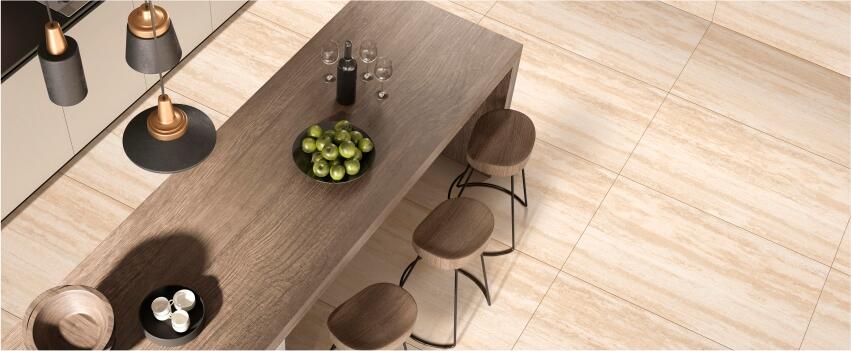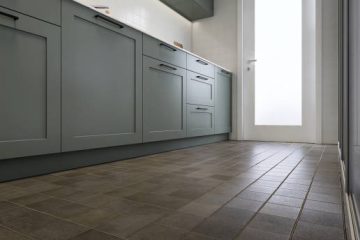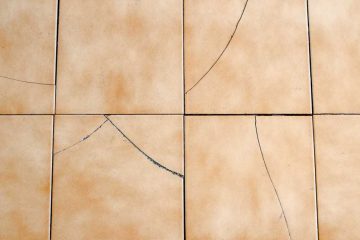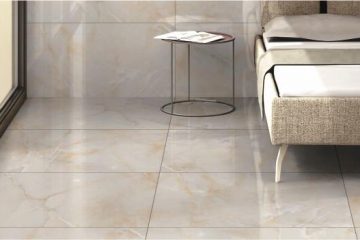Everything you need to know about Travertine Tiles

Travertine is a type of limestone that has been formed from mineral deposits from natural springs. Calcite is a sedimentary rock formed by the rapid precipitation and calcification of calcium carbonate. Travertine’s unique character is created when other minerals are mixed with the calcite.
Travertine is not marble or granite. It is a stone, but it is usually sold in marble varieties on most markets. It is well-known for its distinctive design and warm colors.
Travertine is usually very costly and requires high upkeep, just like natural stones.
Travertine Tiles are a very popular stone that adds charm and beauty to any space. Travertine is available in many sizes and shapes, including ceramic, vitrified, and porcelain. This makes it a highly-seller product.
This is everything you need to know about these class-apart tiles.
Travertine Tiles
Travertine tiles are available in a variety of finishes, just as most tiles come with a range of sizes, shapes, patterns, and designs. Each finish helps you achieve a unique look. Let’s take a look at some of the most sought-after finishes.
- Polished A polished travertine tile has a high gloss and shine. To give it a shiny, reflective surface, it is polished and smoothed.
- Matte A honed Travertine is a tile that looks similar to a polished tile, but it lacks shine and gloss. The unfinished stone is used to polish or grind one side of the travertine to achieve its smoothness.
- Broiled: To achieve a brushed texture, use a brush or wirewheel to brush the surface until you get the desired texture. This texture brushed exterior gives the tile a rustic, yet sophisticated appearance.
Travertine Tiles Color Variants
Travertine tiles come in many different colours. Orientbell Tiles offers travertine in a variety of colours, including grey, silver, brown, and beige. These are just a few of the many colors that can be used with any other tile combination.
Travertine Tiles
Even though other tiles may be competing with these types of tiles, there are still areas where travertine is truly effective.
- Durability:Travertine Tiles are available in ceramic, vitrified, and porcelain bodies. Travertine wall tiles can be used in a variety of ways, including as kitchen and bathroom tiles. They can also be combined with highlighter and dark tiles to create a unique design. You can install travertine floor tiles on floors in vitrified or ceramic versions. They can also last years if maintained well.
- Simple Maintenance: Travertine tiles can be maintained without the need for any special paraphernalia. After clearing out any dust, a regular surface cleaner and a mop would be sufficient. You can do a deep clean every once in awhile, but make sure you don’t place too much pressure or heavy loads on the floor.
- Less water adsorbent: Travertine tiles have a lower water absorption than other types of tiles. The less water absorbed, the lower the chance of cracks from moisture penetration.
- Acid/Chemical Proof: Travertine tiles can withstand a lot of chemicals and are very durable. This means that they can also withstand acid or chemical spillage. It is better to be safe than sorry, so avoid any spillage.
Prices and sizes of Travertine Tiles
The most popular travertine stones tiles are available at Orientbell Tiles in a price range that suits every budget.
- PGVT Travertine Brown is priced at Rs 89 per square. Ft
- ODG Vintage Crema is priced at Rs 85 per square Ft
- Rocker Travetino Gold is priced at Rs 117 per square. ft, which is at the higher end.
Orientbell Tiles offers three sizes.
- Small
- Regular
- Large
The smallest travertine tiles are 300x300mm. Regular travertine tiles are available in two sizes, 600x600mm or 300x600mm. Large travertine tiles can be found in 600x1200mm. You can choose between small, regular, and large depending on your space’s purpose.
How is It Used?
You may be curious about the purpose of these travertine tiles. Its strength and its variety of patterns mean that you can use it in living rooms, bathrooms, offices, malls, corridors and other spaces.
Maintenance and Repair
Travertine, like other natural stones has microscopic pores that are not visible to the naked eye. These pores can allow liquids to leak through and staining agents. You can avoid this problem by using a penetrating and a barrier-surface sealer. The dual treatment should be applied at installation and then reapplied periodically throughout the floor’s life. You will need to reseal the floor more often if you want to keep it glossy. If travertine has been sealed properly, it can be cleaned easily with a damp mop and mild soap.
Polished and honed materials are more susceptible to scratching. Natural finish tiles, on the other hand, are less likely to be damaged or blemished.







